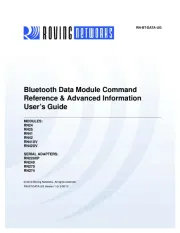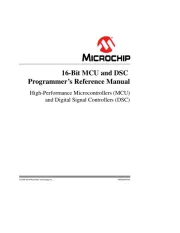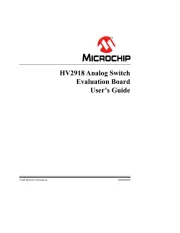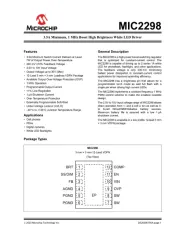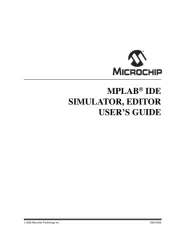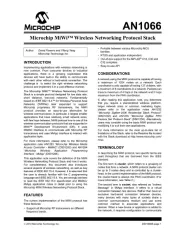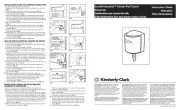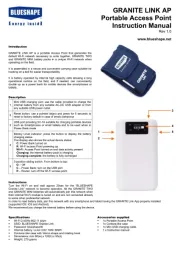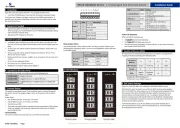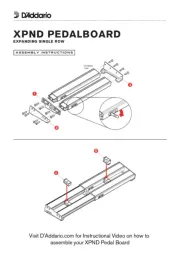2002 Microchip Technology Inc. DS00820A-page 1
MAN820
INTRODUCTION
Semiconductor manufacturers have designed several
types of circuit supervisors with varying types of func-
tionality over the past few years. Some supervisors
incorporate watchdog features as well as complex func-
tions, such as programmable threshold levels. As it
turns out, most system supervisor data sheets address
typical supervisor functions related to Power-on Reset,
power-down, and brown-out conditions. In order to
serve a wide customer base, semiconductor manufac-
turers should also address system supervisors
designed into systems where microcontrollers (MCUs)
and programmable logic devices (PLDs) are pro-
grammed in-circuit. Programming PICmicro® micro-
controllers in this fashion is known as In-Circuit Serial
ProgrammingTM (ICSPTM), which can be implemented
for a variety of reasons, including field upgrades.
System supervisors are available with several types of
output stages. Some have active low output stages,
some active high, and there are others similar to the
MCP100, with output stages that drive RESET lines
both high and low. Supervisor output stages are
extremely important to understand for ICSP circuitry,
since programming equipment actually drives the out-
put stages when the MCU or PLD is being pro-
grammed. While there is a wide variety of supervisor
types available on the market, this Application Note pri-
marily focuses on the MCP120, which has an open
drain, active low, output stage. Even though the
MCP120 was chosen for this ICSP example, the design
techniques included below are intended to guide
designers with supervisors of all kinds for ICSP
circuitry.
CIRCUITRY BACKGROUND
MCP120 Output Stage
A simplified schematic for the MCP120 output stage is
shown in Figure 1. Nominally, the output stage of the
MCP120 can handle sinking less than 1 mA of current
in a high impedance state. That is, when the output is
not driving low and when a voltage is applied to the out-
put that is higher than the power supply level, the out-
put can handle sinking less than 1 mA. Other pertinent
electrical specifications for the device are shown in the
data sheet, which includes test conditions for the chip.
The MCP120 has an open drain output, though it is not
a true open drain. Specifically, the PMOS transistor on
the high side of the output stage is diode-connected, as
shown in Figure 1. When the voltage applied to the out-
put of the supervisor exceeds the power supply for the
chip, the PMOS transistor acts like a forward biased
diode. Lastly, since the output stage is open drain, a
pull-up resistor is required between the supervisor out-
put and VDD.
FIGURE 1: MCP120 output stage simplified.
Author: Ken Dietz
Microchip Technology Inc.
VDD
OutIn
GND
System Supervisors in ICSPTM Architectures



